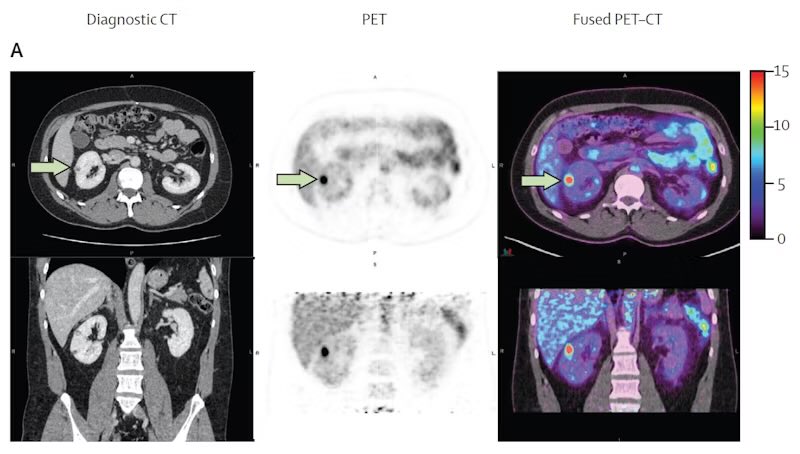
Shahrin Ahmed: The phase III trial was successful in the performance of the radiotracer for kidney cancer
Shahrin Ahmed, Medical Specialist at the Canadian Cancer Society, shared a post on X:
“The phase III trial was successful in the performance of the radiotracer for kidney cancer –
The use of girentuximab could have a significant impact on the clinical practice of renal cell carcinoma, with a focus on staging and monitoring high-risk patients and detecting distant metastases.
Up to 70% of individuals with small clear-cell renal cell carcinoma (ccRCC) tumors will survive for five years. The five-year survival rate is approximately 10% when tumors are already large, making treatment more difficult. Imaging exams performed for other reasons often cause accidental diagnosis of small tumors and without symptoms in people with small tumors.
284 participants were enrolled by the group between August 2019 and July 2022. After receiving a single dose of the tracer intravenously, patients had abdominal PET/CT done five days later, and surgery was performed no later than 90 days after that.
The findings show that the Zr-89 girentuximab PET/CT images were able to identify ccRCC in 85.5% of patients, and that the mean specificity was 87%. The mean sensitivity and specificity were 96.67% for 20 patients with indeterminate renal masses 2 cm in a subgroup analysis.
According to the researchers, the incidence of small renal masses is on the rise. Current imaging techniques make diagnosis and treatment limited, and many patients undergo unnecessary surgery to remove masses that are later found to be benign.
Zr-89 girentuximab PET/CT imaging is now considered a new standard based on these results. In clinical practice, clear-cell renal cell carcinoma can be diagnosed, detected, characterized, and differentiated using a non-invasive tool. Reducing the danger of invasive procedures that are not required.
“The patient, who is 40 years old, was found to have a 12 mm lesion in his superior right kidney that was positive for Zr-89 girentuximab PET and histologically confirmed clear-cell renal cell carcinoma.”
Source: Images available under Creative Commons license (CC BY 4.0 DEED, Attribution 4.0 International) and courtesy of the Lancet Oncology.”

Source: Shahrin Ahmed/X
-
Challenging the Status Quo in Colorectal Cancer 2024
December 6-8, 2024
-
ESMO 2024 Congress
September 13-17, 2024
-
ASCO Annual Meeting
May 30 - June 4, 2024
-
Yvonne Award 2024
May 31, 2024
-
OncoThon 2024, Online
Feb. 15, 2024
-
Global Summit on War & Cancer 2023, Online
Dec. 14-16, 2023
